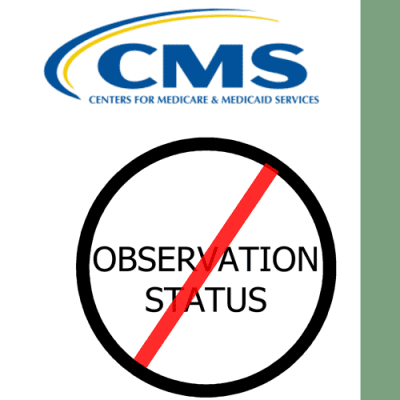The Two-Midnight Rule: Inpatient vs Observation Status
In 2013, CMS (Medicare) promulgated the “Two-Midnight Rule”, a controversial rule that costs Mississippi’s Medicare beneficiaries a lot of money. This rule established time rather than medical conditions as a determining factor for whether or not a person should be admitted as an inpatient. It gives doctors the flexibility to give inpatient treatment without actually admitting the patient. This option would generally be used if the physician believes the patient would not need treatment for more than two days.
The rule states a person can be treated on observation for two days, or up to two midnights without being admitted to the hospital as an inpatient. In some cases, however, hospitals are treating patients as outpatients for several days. The classification as inpatient treatment, which is covered under Part A of Medicare, and observation that is covered as outpatient under Medicare Part B, is a very important distinction to the beneficiary.
When admitted under Medicare Part A, the financial responsibility for the beneficiary or their supplemental policy is a one time deductible of $1,288 for the first 60 days of hospital care. When held on observation, the medical expenses are covered under Part B and therefore subject to the 20% coinsurance. For example, the financial responsibility for a $20,000 hospital bill under Part A would be a $1,288 to the beneficiary, while the same $20,000 under Part B would be $4,000.
People with Medicare supplemental insurance will not have to pay any of this cost because their supplemental policy pays it all, but People with Medicare Advantage plans would be especially hard hit because they have no supplemental coverage. They would be responsible for may copays and coinsurance amounts. This is another reason why Medicare supplemental insurance, or Medigap, is so important.
For the hospital, inpatient admission means more liability. Hospitals are penalized for readmissions for the same condition within 30 days. By treating patients as outpatients when possible, hospitals avoid some potential readmissions that could cost them a reimbursement penalty.
What can a patient do if the hospital classifies their stay as observation? If the patient is still in the hospital, they should talk with their doctor to see if they can be admitted. If the hospital insists on observation status, the patient should ask for a written notice stating what their status is. They can also tell the hospital their status should be changed because the care is “medically necessary at an inpatient level of care.”
Related Blog Posts
-
Medicare offers coverage for emergency room visits, but your cost-sharing responsibility will depend on several factors: your admission status, recommended…
-
When you turn 65 (or if you are disabled and have been receiving Social Security benefits for 24 months), you…













